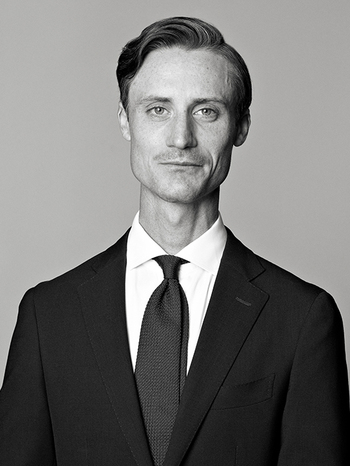Bruno Liljefors
Flying Swan
Estate stamp verso. Panel 32 x 24.5 cm
Provenance
Artist's estate no. 649.
More information
The depicted swan is a Whooper Swan (Cygnus cygnus), which is characterized, among other things, by its yellow beak (the Mute Swan has a red beak). In the early 1900s, the Whooper Swan was close to extinction in Sweden due to intensive hunting and was then only found in a few remote locations in Lapland. Since then, its population has increased explosively, and from the 1950s onwards, it has also established itself in southern Sweden. Today, it breeds throughout Sweden. In the current study, Liljefors has focused on the swan's wing formations in flight. Liljefors has conducted another study of a flying Whooper Swan (auction, Stockholms Auktionsverk, Gothenburg, October 13, 2022, no. 2428283, canvas 22 x 37 cm). This had number 690 in the list of the artist's estate. Similar to the current study, it is also titled "Flying Swan," by the artist on a pink label on the back.
Artist
Bruno Liljefors is the Swedish artist best known for his nature and animal motifs, especially in dramatic situations. Liljefors started with studies at the Academy of Arts in 1879, and continued 1882 in Düsseldorf where the studies revolved around animal painting. The journey then continued to Venice, Rome, Naples, Paris and Grez. Once back in Sweden, he began to draw and paint animals, especially cats and small birds, from the beginning in intimate interaction with nature. He then moved on to broader depictions of wild animals and nature, of seascapes with seabirds and of dramatic scenes of battles between birds. Liljefors is known as our country's foremost animal painter with a large production. Liljefors depicted, in contrast to the "idyllic" animal painting, the animals everyday life with a focus on movement, anatomy and their adaptation to the landscape. This is where the greatness of his painting lies, in the ability to show the animals in their proper environment. He has achieved this by hunting and observing. Well-known works of art are the paintings "Rävfamilj" (1886) and "Havsörnar" (1897), as well as the sculpture "Lek" (1930) at Stockholm Stadium. Liljefors is mainly represented at the National Museum, Waldemarsudde and the Thielska gallery in Stockholm.
Read more











































